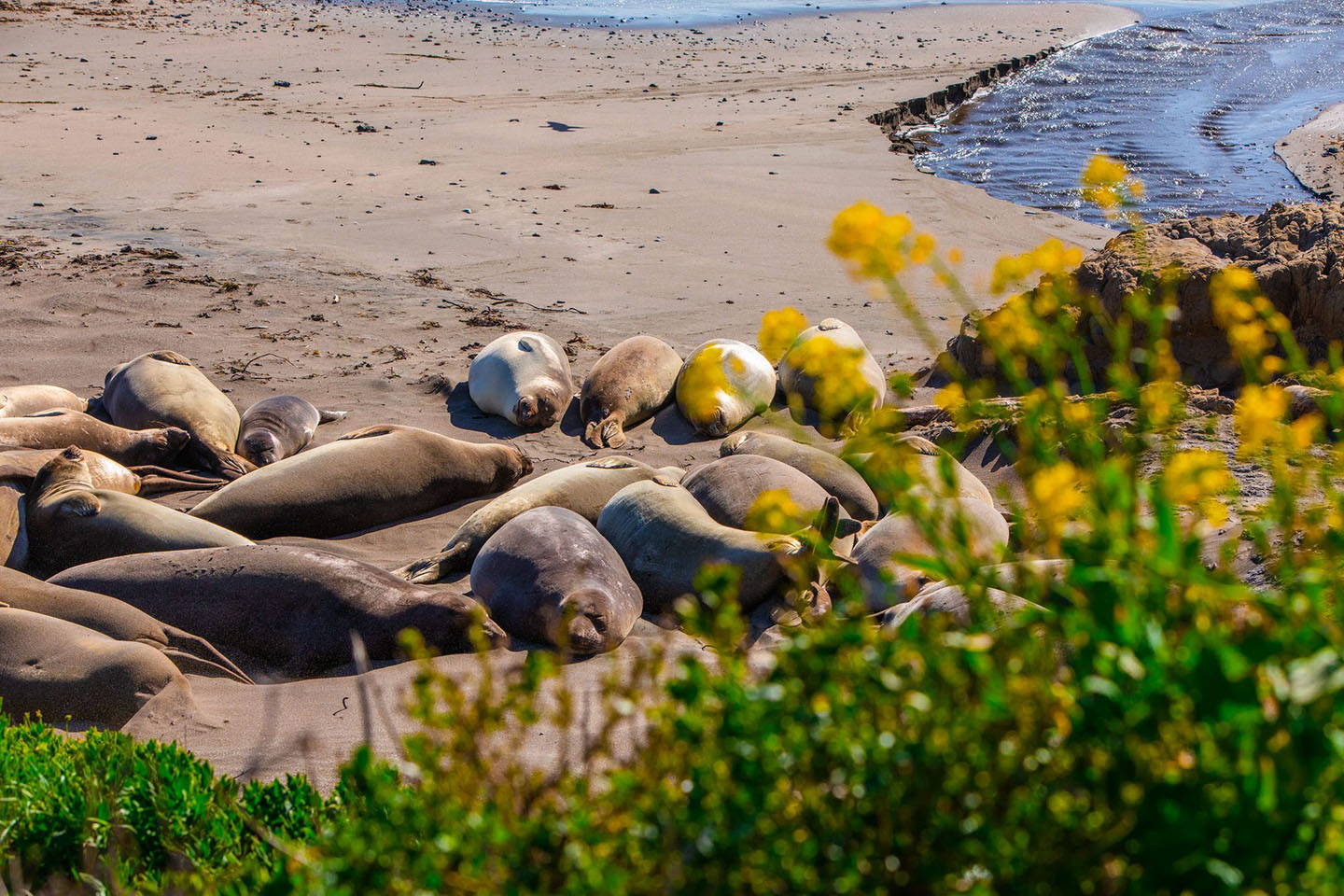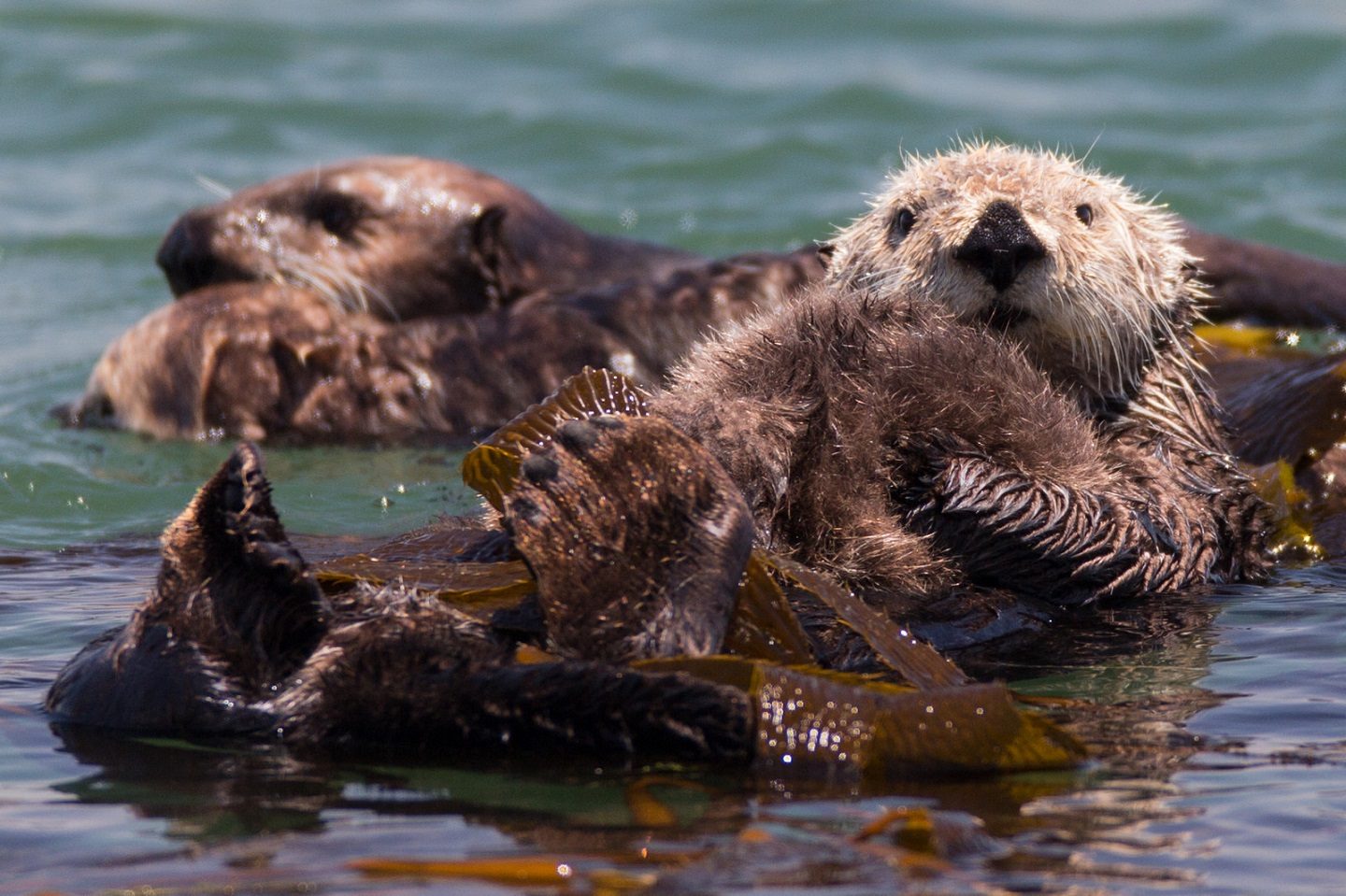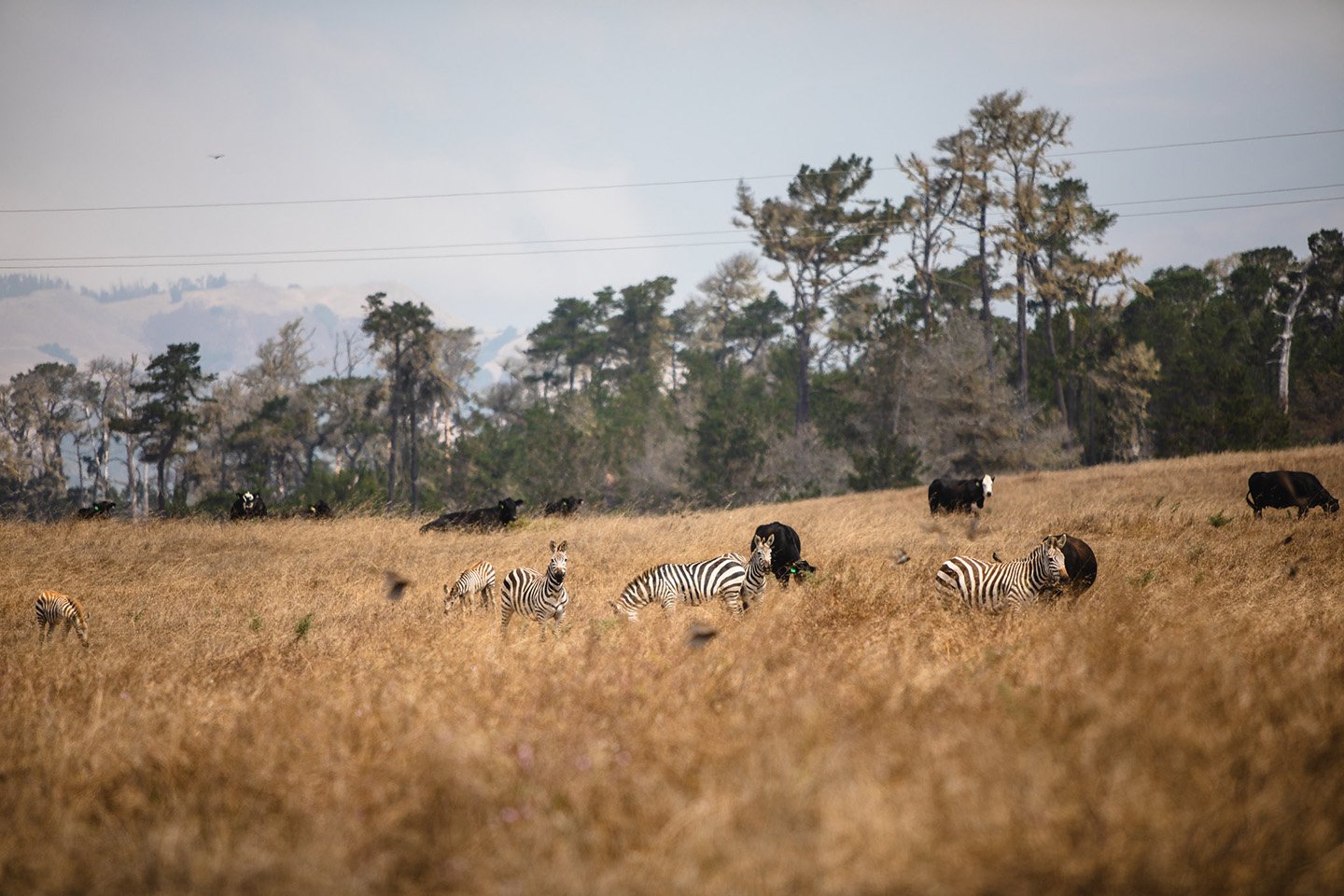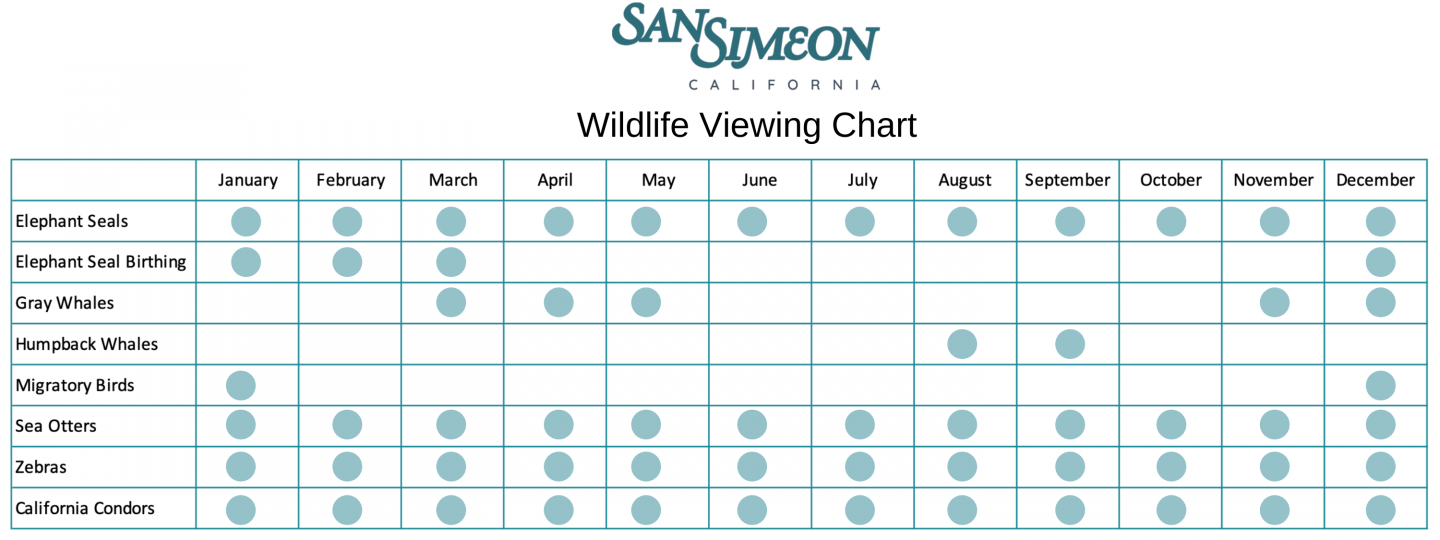Home to the Monterey Bay National Marine Sanctuary and Hearst San Simeon State Park, San Simeon is the perfect spot to observe wildlife in their element.
Hike along family-friendly coastal bluff trails with lookout points to view seabirds and marine life, explore nature up close at tidepools full of life and observe the elephant seals at the Piedras Blancas Rookery. Fully immerse yourself in the peaceful landscape of San Simeon, and experience nature like never before.
In order to best view wildlife in San Simeon, head out at dawn or dusk, conduct research on what signs to look for if searching for specific animals and remain patient while looking for wildlife. Remember to respect nature, and always keep a safe distance from wildlife.
Pack a water, grab your binoculars and head out to explore!
Spring Wildlife Viewing
Spring in San Simeon means wildlife! March is one of the best months to view the flourishing wildlife around San Simeon, from elephant seals to sea otters to the infamous zebras. Warmer weather brings an abundance of food for animals to load up on before migration or while nursing their young. Here are some of the most frequently sought – and seen – animals in and around San Simeon.

Watch Wildlife of San Simeon
Elephant Seals
The Piedras Blancas Rookery located off of Highway 1 in San Simeon is the only elephant seal rookery in the world that is easily accessible, free and open to the public every day of the year. The rookery hosts up to 17,000 elephant seals at peak times in January, April and October for birthing, breeding and molting, but elephant seals can be seen on the shores all year round.
Fun Fact: The male elephant seal, called a bull, can weigh up to 5,000 pounds!

Whales
San Simeon boasts two designated Whale Trail viewing sites, one at the Cavalier Oceanfront Resort and the second on the San Simeon Bay Pier. The marine protected waters offer some of the best wildlife viewing spots in the world with 34 species of marine mammals off of the shore. Search for the heart-shaped blows of gray whales, tall dorsal fins of orcas or feeding humpback and blue whales. The best times to spot whales is when the wind and sea is calm, such as in the early morning and an hour or so before sunset.
Fun Fact: Gray whales make one of the longest annual migrations of any mammal, traveling as far as 10,000 miles.
![Tail Fluke on dive. Humpback Whales, Megaptera novaeangliae, lunge feeding, diving, feeding, off our boat (one of 7 whale photos in a set of 20 photos for the trip) while watching...
Humpback Whales (Megaptera novaeangliae) feeding, diving, surrounded by birds and sea lions, just off Morro Rock. Sub Sea Tours Whale Watching, Sunday Aug. 11, 2013 , 9 AM, Morro Bay, CA. Humpbacks Whales are again in abundance just off our coast, seen with Captain Kevin Winfield, Sub Sea Tours, 34’ Dos Osos boat. Sub Sea Tours is at the base of Pacific Avenue at 699 Embarcadero Road in Morro Bay, CA. More info at Sub Sea Tours and Kayaks, Morro Bay Charters, 699 Embarcadero Road #9 http://www.subseatours.com/ http://www.subseatours.com/whale-watching-morro-bay/ https://www.facebook.com/pages/Sub-Sea-Tours-Kayaks-and-Whale-Watching/118305161950 See past photos and post your photos to http://www.flickr.com/groups/subseatours/pool/ same as http://www.flickr.com/groups/1518356@N22/pool/ Directions and map http://bit.ly/whalewatch6-6-13 same as https://maps.google.com/maps?ie=UTF-8&q=map+Sub+Sea+Tours+699+Embarcadero+%239+Morro+Bay,+CA+93442&fb=1&gl=us&hq=Sub+Sea+Tours+699+Embarcadero+%239+Morro+Bay,+CA+93442&cid=0,0,4950881230604710036&ei=LzOtUenCOebAigLEsoGwAg&ved=0CJwBEPwSMAQ Facebook: https://www.facebook.com/pages/Sub-Sea-Tours-Kayaks-and-Whale-Watching/118305161950
Photo © 2013 “Mike” Michael L. Baird, mike {at] mikebaird d o t com, flickr.bairdphotos.com, Canon 5D Mark III, with Canon EF 70-200mm f/2.8L IS USM Telephoto Zoom Lens, with no Circular Polarizer, handheld, IS, RAW. Generally over-exposed ~1+ stop. See EXIF for detailed settings. GPS geotags are realtime from on-camera Canon GP-E2 GPS Receiver.
To use this photo, see access, attribution, and commenting recommendations at http://www.flickr.com/people/mikebaird/#credit - Please add comments/notes/tags to add to or correct information, identification, etc. <i>Please, no comments or invites wit Whale Tail](https://old.visitsansimeonca.com/wp-content/uploads/2020/11/whale.jpg)
Sea Otters
Off the shores of San Simeon, sea otters live in kelp forests and estuary habitats part of the Monterey Bay National Marine Sanctuary. Despite their relatively small size, being the second smallest marine mammal, sea otters can dive up to 330 feet to forage for food in the ocean. Their diet primarily consists of crabs, snails, urchins, clams, abalone and mussels. Sea otters can be seen swimming and feeding in the water all year long.
Fun Fact: Sea otters eat 25% of their body weight in food every day.

Birds
From William Randolph Hearst Memorial State Beach up the coast to the Gateway to Big Sur, there are a number of incredible bird watching areas in San Simeon. Look for Grebes, Scoters and Marbled Murrelets from the San Simeon Bay Pier, as well as Pigeon Guillemots nesting under the pier. At Arroyo Laguna Creek, ducks and shorebirds often play in the creek. Head up Highway 1 to the elephant seal rookery, where gulls, Glaucous-Winged, Mew and Herring birds can be seen gliding in the breeze. And keep your eye out for California Condors recently released by Ventana Wildlife Society, helping to expand condor distribution in areas offering important nesting habitat and scavenging resources.
Fun Fact: Two adult condors have flown down the coast from Big Sur and established a nearby territory in San Simeon, being the first condors to nest in San Luis Obispo County in over 60 years.
Zebras
While it sounds like an unlikely sight, the coastal town of San Simeon is home to a herd of zebras. The animals were originally brought to San Simeon by William Randolph Hearst in the early 1900’s for his ranch at Hearst Castle, and remain on the land today. As you travel along Highway 1, keep your eye out for their black and white stripes east of the highway where they can be seen grazing upon the rolling hillsides that overlook the Pacific Ocean.
Fun Fact: Researchers have determined that zebras are black animals with white stripes.

Elk
A unique herd of elk roam Hearst San Simeon State Park, descendants of the original elk herd William Randolph Hearst owned in his private zoo (similar to the origin of the zebras). Researchers believe the herd to be Roosevelt or Rocky Mountain Elk, which are nonnative to the area. The group can sometimes be seen across Highway 1 towards the ocean or grazing on grasses near the Piedras Blancas Light Station.
Fun Fact: Just like plants, elk antlers grow faster in sunlight. On average, they grow about one inch per day.
Tidepools
As the tide recedes, seawater gets trapped amongst rocks near shore, leaving tide pools packed with sturdy sea life. Head to San Simeon Beach to look for crabs scavenging for food, saltwater mussels hiding among the rocks, vibrant starfish making their way along stretches of sandbars, or simply watch the sea anemone ebb and flow with the tide.
Fun Fact: Sea anemones are closely related to jelly fish and corals.


Tips for Watching Wildlife
1. Get Up Early
Often the best times for observing animals are early in the morning and in the evening. So, turn on the coffee and get ready for a great day of wildlife viewing!
2. Stay Quiet
Make as little noise as possible and listen for signs of animals. You can often hear wildlife before you see it. Move slowly and silently to not startle the animals.
3. Be Patient
Find a comfortable place to settle in, and be prepared to look, listen and wait.
4. Be Prepared
Dress appropriately for the weather. San Simeon can be cool under fog or warm in the sun – layers are always good. Bring a notebook and something to write with so you can record what you see. You might also want to bring a camera and binoculars.
5. Respect Wildlife
Always keep a safe distance from wildlife. Never follow, try to approach or feed wild animals. If you want a close-up look, bring a pair of binoculars!
View Wildlife While Hiking Along Highway 1
#SANSIMEONWILDLIFE
- Beaches
- Free Things To Do
- Hikes, Guided Walks & Boardwalks
- Kid Friendly
- Must-See Spot
- Outdoor Activities & State Parks
